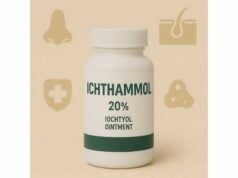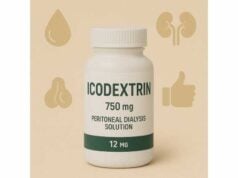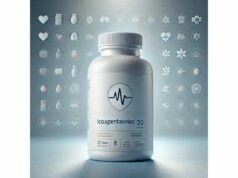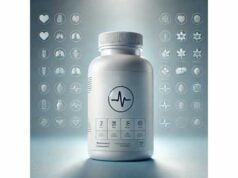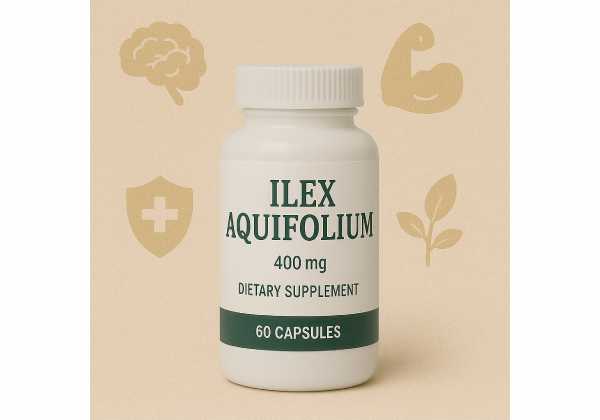
Ilex aquifolium—better known as European holly—is an evergreen shrub with glossy, spined leaves and bright red berries. Beyond its iconic winter look, the plant’s leaves contain polyphenols (notably chlorogenic acids), triterpenoid saponins, and other constituents that show antioxidant, antimicrobial, and anti-inflammatory activity in laboratory models. Unlike its caffeinated cousins (yerba mate, guayusa, yaupon), European holly is not consumed as a stimulant beverage; its traditional uses involve gentle decoctions or topical washes prepared by trained practitioners. The berries, however, are ornamental only and can cause gastrointestinal upset if ingested. This guide distills what science currently supports, how preparations are traditionally made, practical guardrails for cautious dosing, and clear safety boundaries so readers can understand where European holly may fit—and where it plainly does not—in a modern wellness routine.
Key Insights
- Leaf extracts show antioxidant and anti-inflammatory effects and may exhibit antimicrobial and antiviral activity in lab models.
- Berries are not edible; ingestion commonly causes nausea, vomiting, and diarrhea.
- If used with practitioner guidance: weak decoction of 1–3 g dried leaf per 250 ml water, up to 1 cup/day, short courses.
- Avoid internal use during pregnancy and in children; use caution with GI sensitivity or if taking multiple medications.
Table of Contents
- What is Ilex aquifolium and how does it work?
- What benefits are plausible—and what are the limits?
- Forms, preparation, and practical usage
- Dosage and timing: sensible ranges
- Safety, side effects, and who should avoid it
- Evidence summary and research gaps
What is Ilex aquifolium and how does it work?
European holly (Ilex aquifolium) is native to western and southern Europe and valued worldwide as an ornamental shrub. Its leathery, dark-green leaves remain through winter, while clusters of red berries persist into the cold months. The plant is dioecious—male and female flowers occur on separate plants—so fruiting requires a pollen source.
From a phytochemical standpoint, holly leaves contain phenolic acids (including chlorogenic acid isomers), flavonoids (such as quercetin derivatives), triterpenoid saponins, and smaller amounts of other secondary metabolites. In vitro and ex vivo experiments show these constituents can neutralize reactive oxygen species, modulate inflammatory signaling, and inhibit the growth of certain microbes. The overall pattern matches what many herbalists expect from a “leafy, polyphenol-rich” preparation: non-stimulant, moderately bitter, and best suited for short, targeted use rather than long, daily consumption.
It is important to distinguish European holly from other Ilex species commonly consumed as beverages. Yerba mate (Ilex paraguariensis), yaupon (Ilex vomitoria), and guayusa (Ilex guayusa) naturally contain caffeine and are brewed as daily teas. European holly does not have a documented caffeine tradition and should not be substituted for those plants in stimulant-seeking routines.
In traditional European folk practice, leaf decoctions or washes were used for minor inflammatory complaints or as supportive care during seasonal ailments. Modern lab studies have broadened interest—exploring antimicrobial, antiviral, and enzyme-inhibitory effects of leaf extracts—but human trials remain scarce. That means mechanisms are plausible, early data are encouraging, but clinical efficacy and optimal dosing in people are not yet established.
Finally, while the shrub is beautiful in winter arrangements, its berries are not a snack. They contain saponins that irritate the gastrointestinal tract. Households with children or pets should keep decorations out of reach and avoid “edible-looking” displays.
What benefits are plausible—and what are the limits?
Antioxidant activity. European holly leaf extracts consistently perform well in chemical antioxidant assays and cellular models. Chlorogenic acids and flavonoids donate electrons and regulate redox-related enzymes, while saponins may stabilize cell membranes during oxidative stress. In practical terms, a weak leaf decoction can contribute to overall dietary polyphenol exposure, similar in spirit—though not identical—to other non-caffeinated, phenolic-rich herbs.
Anti-inflammatory effects. In leukocyte and skin models, Ilex aquifolium extracts have dampened inflammatory mediators, including leukotriene synthesis. While this suggests a soothing potential for minor inflammatory states, it does not translate to treating chronic inflammatory disease. The most reasonable takeaway is supportive, symptom-level potential rather than disease modification.
Antimicrobial and antiviral potential. Multiple studies report inhibitory effects of Ilex leaves (including European holly) against selected bacteria and fungi in vitro. Recent work has also explored antiviral activity in formulated extracts combining leaf phytochemicals with delivery technologies. Such findings are hypothesis-generating: they hint that a well-prepared extract could contribute to barrier or cleansing routines (e.g., topical rinses or washes), yet they stop short of showing clinical prevention or treatment of infections.
Enzyme inhibition and cosmetic applications. Leaf extracts have shown inhibition of enzymes like tyrosinase (important in pigmentation) and cholinesterases (relevant to neuromodulation) in test systems. In the wellness market, this opens the door to cosmetic or cosmeceutical interest—brightening serums, soothing toners—where external use can leverage antioxidant and enzyme-inhibitory profiles without systemic exposure.
Metabolic angles: lipids and sugars. Exploratory work on European holly and broader Ilex leaves suggests modest effects on lipid-related pathways in preclinical models. At present, there is no reliable evidence that European holly leaf preparations lower cholesterol, reduce body weight, or improve glycemic control in humans. Any metabolic benefit should be considered tentative until clinical trials confirm magnitude, dose, and duration.
Limits and realistic expectations. European holly is not a daily tonic like green tea or coffee. Its best-fit roles, pending stronger human data, are (1) short, practitioner-guided leaf decoctions during seasonal support windows, (2) gentle topical rinses or soaks for minor skin discomforts, and (3) cosmetic formulations leveraging antioxidant and enzyme-inhibitory properties. It is not appropriate for self-treatment of infections, chronic inflammatory disease, or metabolic disorders.
Forms, preparation, and practical usage
Leaf decoction (traditional). The classic preparation is a simmered tea. Dried, cut leaves are placed in cool water, brought to a gentle simmer, and kept there for 20–30 minutes, then strained. This draws water-soluble phenolics and saponins into solution. Because bitterness escalates with time and concentration, start weak and taste as you go. A pale golden-green cup with light bitterness is preferable to a dark, overly astringent brew.
Capsules and standardized extracts. Some niche suppliers sell encapsulated leaf extracts. Labels may list extraction ratios (e.g., 10:1) or identify marker compounds such as total chlorogenic acids. Without widely accepted standards for European holly, products vary. If you choose a capsule, look for: species name (Ilex aquifolium), plant part (leaf/folium), solvent system (e.g., water or hydroalcoholic), lot testing for contaminants, and absence of caffeine claims (a red flag for mislabeling).
Topical rinses and compresses. A very dilute decoction can be cooled and used externally as a short-term rinse or compress for mildly irritated skin. Always patch-test first on the inner forearm. Discontinue if redness or itching occurs.
Combination formulas. In historical practice, holly leaves rarely appeared alone; they were part of multi-herb formulas balancing properties (for example, pairing a mildly bitter, antioxidant leaf with demulcent herbs to soften GI irritation). If you receive a formula from a trained practitioner, follow their instructions on proportions and duration.
What not to use. Do not eat the berries. Do not harvest landscape material for internal use—it may carry pesticides, road pollutants, or incorrect species lookalikes. Do not substitute other Ilex species without understanding their chemistry; caffeinated species behave differently and are used in different contexts.
Storage. Keep dried leaves in an airtight container away from heat and light. Use within six months of opening for best flavor and phytochemical integrity. Discard material that smells musty, appears discolored, or shows visible contamination.
Taste and pairing tips. European holly leaf is mildly to moderately bitter. To balance flavor in a decoction, you can add a slice of fresh ginger during the last 5 minutes or a thin strip of lemon peel off-heat. If bitterness bothers your stomach, consume with a small snack rather than on an empty stomach.
Dosage and timing: sensible ranges
There is no clinically established human dose for Ilex aquifolium leaf. Sensible use therefore means erring on the side of low strength and short duration, ideally with guidance from a clinician trained in herbal medicine. A practical, conservative framework is:
For a weak decoction (adult):
- Leaf amount: 1–3 g dried, cut leaf per 250 ml water.
- Method: Simmer 20–30 minutes, covered; strain.
- Serving: Begin with ½–1 cup/day for up to 7–10 days, then reassess.
This approach mirrors how many traditional leaves are introduced when human dosing data are limited: start low, observe, and pause. People with GI sensitivity may do better at the 1–2 g end of the range or with shorter simmer time.
Capsules and extracts: Because commercial products are not standardized, there is no cross-brand dose equivalence. If a practitioner recommends a capsule, start at the lowest label serving and avoid stacking with other polyphenol-heavy extracts until you understand your tolerance.
Timing: Take with food to minimize stomach upset. Do not use late in the evening if you notice any digestive stimulation or restlessness (rare but possible with bitter herbs).
Course length and cycling: Short courses are prudent—several days on, followed by a pause—to evaluate whether the preparation is helping your goal (for instance, soothing seasonal discomfort or supporting skin care). Long, continuous use is not recommended in the absence of clinical data.
Children, pregnancy, lactation: Avoid internal use. If topical use is considered for adults who are pregnant or breastfeeding, keep applications small, avoid broken skin, and consult your clinician first.
When to stop: Discontinue immediately if you experience persistent nausea, vomiting, diarrhea, abdominal cramping, or rash. Seek medical advice if symptoms are severe or do not resolve.
Safety, side effects, and who should avoid it
Berries are toxic to ingest. European holly berries can cause gastrointestinal symptoms—nausea, vomiting, diarrhea, abdominal pain—especially in children and pets. They are for decoration only. If accidental ingestion occurs, contact your local poison control service.
Likely side effects from leaf preparations. Concentrated leaf decoctions or extracts may cause stomach upset, cramping, or loose stools, due to saponins and bitter principles. Taking with food, reducing strength, or stopping use typically resolves symptoms.
Allergic reactions. True allergy is uncommon but possible. Stop use if you notice rash, itching, or swelling.
Medication considerations (theoretical):
- Anticoagulants/antiplatelets: Polyphenol-rich extracts can sometimes influence platelet behavior in lab settings. While clinical relevance is uncertain, be cautious if you take warfarin, DOACs, or daily aspirin.
- Renal or gout therapies: If exploring holly for uric-acid–related reasons based on preclinical literature, do not replace prescribed treatments; combinations should be clinician-supervised.
- Multiple supplements: Stacking several high-polyphenol products (green tea extracts, resveratrol blends, etc.) increases the chance of GI upset and complicates attribution if side effects occur.
Who should avoid internal use:
- Pregnant or breastfeeding individuals (insufficient safety data).
- Children and adolescents.
- People with active GI disease (ulcer, IBD flare) unless a clinician advises otherwise.
- Anyone with a history of plant-allergy reactions to hollies or related ornamentals.
Topical precautions. Use only on intact skin; patch-test first. Discontinue if irritation develops.
Household safety. Keep wreaths, arrangements, and fallen berries out of reach of toddlers and pets. Consider berry-free cultivars indoors, or switch to artificial decorative berries to eliminate risk.
Bottom line. European holly can be handled safely with basic precautions—do not consume the berries, and keep leaf preparations weak, short-term, and guided. The main risks are GI discomfort from concentrated use and poisoning from berry ingestion, which is preventable through informed handling.
Evidence summary and research gaps
What is well documented (in labs):
- Antioxidant capacity. European holly leaves exhibit strong performance in chemical and cellular antioxidant tests, with chlorogenic acid isomers and flavonoids as key contributors.
- Anti-inflammatory signals. Extracts have reduced leukotriene formation and other pro-inflammatory mediators in experimental systems, consistent with a soothing, supportive profile.
- Antimicrobial/antiviral actions. Water and hydroalcoholic extracts of Ilex leaves—including Ilex aquifolium—have inhibited growth of certain bacteria and fungi in vitro, and recent studies are evaluating antiviral properties and delivery formats.
What is emerging (preclinical):
- Enzyme inhibition and cosmeceutical relevance. Inhibition of tyrosinase and cholinesterases suggests potential cosmetic and neuro-support angles, primarily for topical or exploratory use.
- Composition maps. Modern profiling identifies dominant phenolic acids and quantifies ranges across leaves and fruits, informing future standardization.
What is missing (in humans):
- Randomized clinical trials. There are no robust RCTs defining effective doses, target conditions, or long-term safety for European holly as a single-agent supplement.
- Pharmacokinetics. Human absorption, distribution, metabolism, and excretion of leaf constituents remain understudied, making dose–response relationships uncertain.
- Comparative effectiveness. We lack head-to-head data against better-studied, food-grade polyphenol sources (green tea, olive leaf), which likely offer similar benefits with clearer safety margins.
How to interpret the gap. Without human trials, European holly should not be promoted for treating disease. Instead, it can be considered a specialty, short-course herb with promising lab data, best used externally or in very mild internal preparations under professional supervision. For most people seeking everyday antioxidant support, proven dietary strategies—colorful produce, tea, coffee, cocoa, and spices—offer clearer benefit–risk profiles.
Future directions. Priorities include establishing standardized extracts with defined marker compounds, conducting dose-ranging human studies for topical and internal uses, and mapping safety in vulnerable groups. Until then, informed, cautious practice is the responsible path.
References
- Biological Potential and Chemical Profile of European Holly (Ilex aquifolium L.) 2021 (Review)
- Assessing Algerian Ilex aquifolium L.’s phenolic profile, antioxidant capacity, enzyme inhibitory effects and in silico studies 2024 (Study)
- Composition and Antimicrobial Activity of Ilex Leaves Water Extracts 2021 (Study)
- Antiviral and Cytotoxic Activities of Ilex aquifolium Silver-Containing Formulations 2024 (Study)
- Ilex aquifolium L. (PIM 272) 2008 (Toxicology Monograph)
Disclaimer
This guide is for educational purposes and does not replace personalized medical advice, diagnosis, or treatment. Do not ingest holly berries. If you choose to use Ilex aquifolium leaf preparations, do so only under guidance from a qualified healthcare professional, especially if you are pregnant or breastfeeding, have medical conditions, or take prescription medications. Seek urgent care or contact poison control if berries are swallowed or if concerning symptoms occur after use.
If this article was useful, please consider sharing it on Facebook, X (formerly Twitter), or any platform you prefer, and follow us for future evidence-based guides. Your support helps us continue creating high-quality, people-first content.

